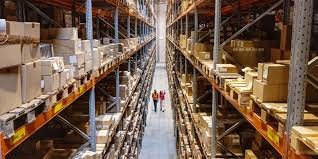What is the Manufacturing Industry? The manufacturing industry is a cornerstone of modern economies, transforming raw materials into finished goods through various processes, including manual labor, machinery, and chemical processing. This sector is pivotal in driving innovation, job creation, and economic growth. In this blog, we will delve into the definition, types, processes, and significance of the manufacturing industry, highlighting key aspects and trends shaping its future. Definition of Manufacturing Manufacturing involves the creation of products from raw materials using tools, human labor, machinery, and chemical processing. This process adds value to raw materials, converting them into finished goods that can be sold at a higher price. The manufacturing industry encompasses a wide range of activities, from small-scale handcrafting to large-scale industrial production. Types of Manufacturing Manufacturing can be broadly categorized into several types based on the nature of the production process and the products being manufactured: Key Processes in Manufacturing The manufacturing industry relies on various processes to transform raw materials into finished products. Some of the most common processes include: Importance of the Manufacturing Industry The manufacturing industry plays a crucial role in the global economy, contributing to various aspects of societal and economic development: Trends Shaping the Future of Manufacturing The manufacturing industry is continuously evolving, driven by technological advancements and changing market demands. Some key trends shaping the future of manufacturing include: Challenges Facing the Manufacturing Industry Despite its significance, the manufacturing industry faces several challenges that need to be addressed to ensure sustained growth and competitiveness: Conclusion The manufacturing industry is a dynamic and vital sector that drives economic growth, innovation, and job creation. From traditional processes like casting and machining to cutting-edge technologies like additive manufacturing and Industry 4.0, the industry continues to evolve and adapt to changing market demands. As the world moves towards a more sustainable and technologically advanced future, the manufacturing industry will play a crucial role in shaping the global economy and improving the quality of life for people around the world. By understanding the definition, types, processes, and significance of the manufacturing industry, we can appreciate its impact on our daily lives and the broader economy. As we look ahead, embracing technological advancements, sustainability, and workforce transformation will be key to ensuring the continued growth and success of the manufacturing industry.



